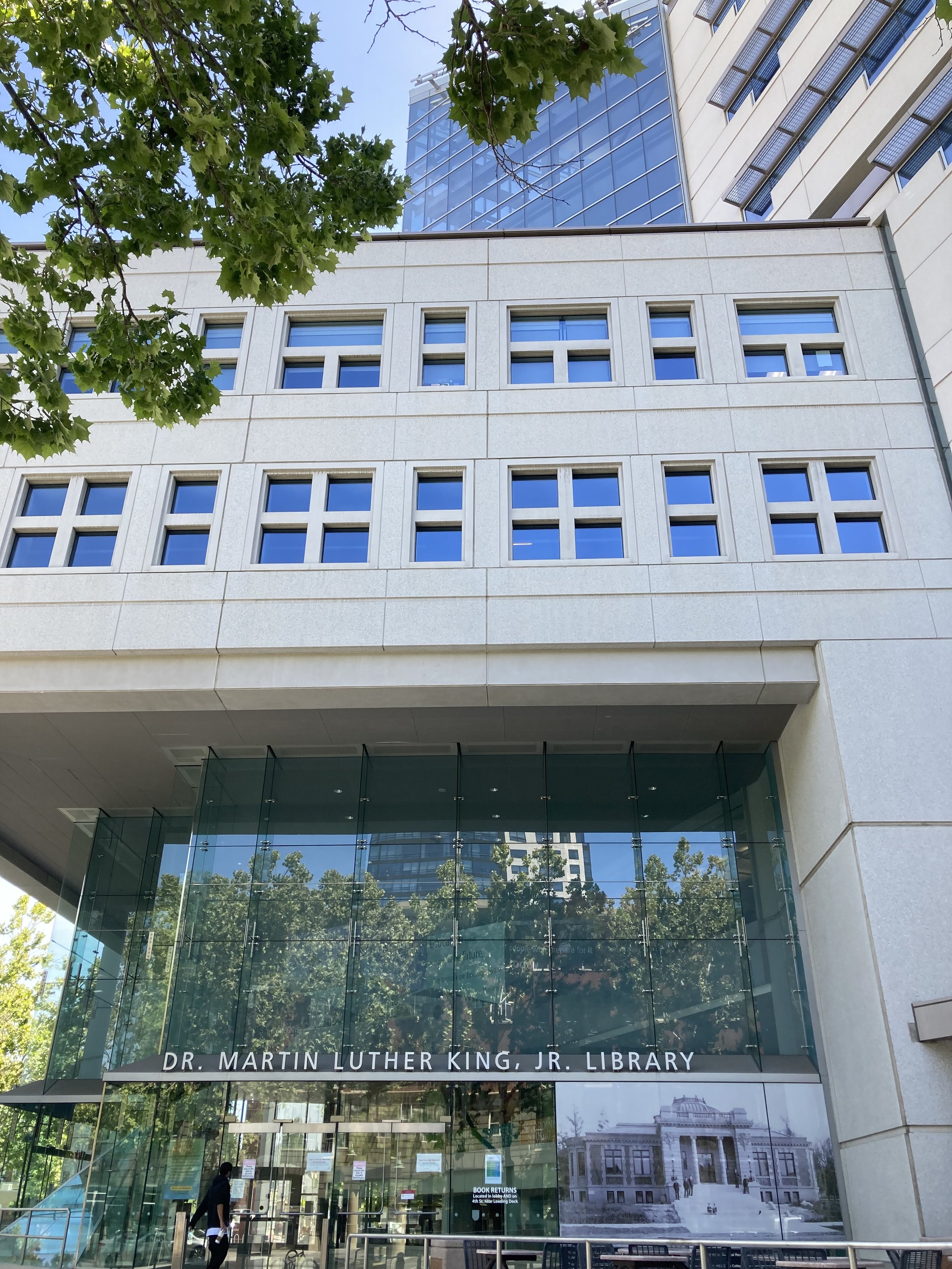Musical Takeaways from Trip #1
The large library at SJSU. The Beethoven Center is on the 5th floor.
Wow, there is a lot to catch up on! My last research day was Friday, and to celebrate I decided to go out for dinner and take the evening off writing, thinking, “what will there even be to write about tomorrow?” Silly me. For the sake of space, I’ve written mostly about the research here and more about my daily activities in the next post.
During my final day at the library, I spread my time between several works. I transcribed autograph manuscript markings from the Kyrie of the Missa Solemnis and the Opus 109 Piano Sonata. Then I returned to the copyist parts from Symphony No. 3, focusing primarily on the ones used for the premiere. Going through these is particularly time-consuming and I didn’t finish. However, I did get a better sense of copyists’ handwriting styles.
At one point, Eric Gjovaag brought over a very nice facsimile of the Op. 132 String Quartet autograph. While looking through the first movement and listening to the recording, I noticed a striking difference between Beethoven’s style of writing and the copyists’. There was also a huge difference between Beethoven’s use of Manuscript Expressive Markings in this quartet and the orchestral works I had been studying. In the other works, the MEMs are often inconsistent between instruments, but without a musical reason I can decipher. However, in this quartet, the markings are very often consistent among all parts (if one instrument is marked pp// in a particular place, then often all the instruments will have pp//). They also appear to have musical significance (a marking of pp will be followed by pp// a few measures later where even more sensitivity is needed).
Library interior
Nicholas Kitchen has pointed out that Beethoven really used MEMs significantly in his later works and Mr. Gjovaag noted that these late string quartets were very important to Beethoven. Just by looking at the handwriting (which is clearly legible in Op. 132, and quite messy in many of the earlier orchestral works), one sees a heightened level of intentionality and seriousness. I do think it possible that Beethoven really thought about his markings differently in different works.
In summary of my week, I learned that many copyists used what I thought had been Beethoven-specific manuscript markings. However, no one has as wide a range of markings as Beethoven. If a copyist underlines a p, that is sometimes because that’s just how he writes all ps. Several copyists always underline pp but not p. Copyists sometimes write f as fe or for, and ff as ffmo or ffor, but copyists rarely use more than a couple of these in a specific manuscript. Single underlining is common among copyists, but almost the only double underlinings I found were Beethoven’s corrections.

